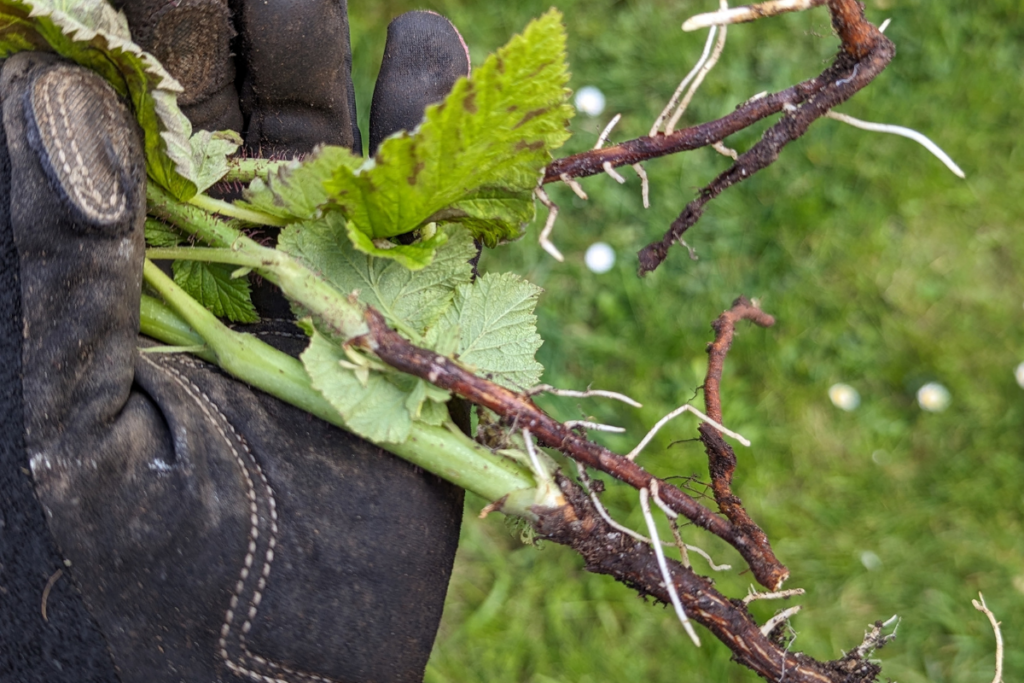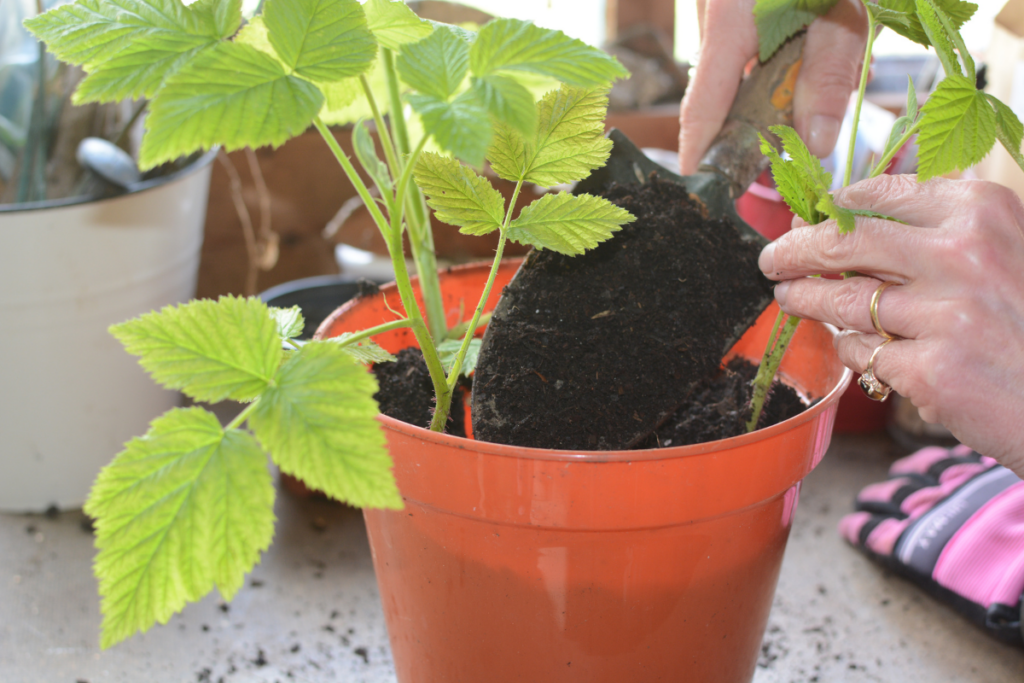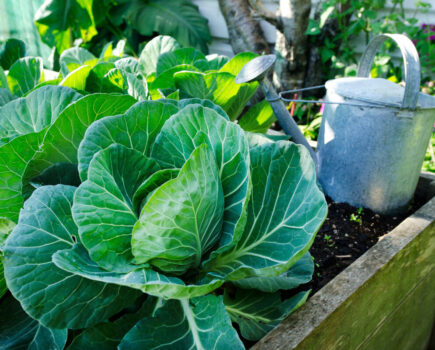Rogue shoots can be potted up to replace dead and dying plants
We are having a bit of an issue with our raspberries, in that their extensive root systems are sending out shoots all over one side of the garden. They are popping up in the lawn and also in one of the beds, among the delphiniums and alliums, and while it isn’t a problem of massive proportions, it is a bit annoying.
However, on the plus side, it has given us new raspberry plants for free. When I carefully pulled up a few of the suckers, they emerged from the soil with a series of small roots on their subterranean length of stem. I’ve potted them up and when they are more established will plant them with our other raspberries, using them to fill gaps where the oldest canes have died.

Raspberries are easy to grow; they like a sunny, sheltered spot and neutral, slightly acidic soil, and will happily grow with little intervention. They should be fed and mulched in spring and their soil kept damp, especially during hot dry spells. They are relatively unbothered by pests and disease, but do watch out for garden birds pilfering the berries when they ripen.
Summer-fruiting canes are cut to the ground as soon as they have been harvested and the shorter, slightly less robust autumn-fruiting canes are pruned similarly in late January or early February.
So all I need to work out, now, is the fruiting regime of our new canes!
Potting canes
Grow them before planting

1. The raspberry suckers had lots of healthy side roots attached to the subterranean main stem.

2. I potted up the shoots in peat-free multipurpose and though they wilted a little initially, they soon bounced back and are now thriving.
Find more tips, advice and articles like this at the Amateur Gardening website. Subscribe to Amateur Gardening magazine now.





